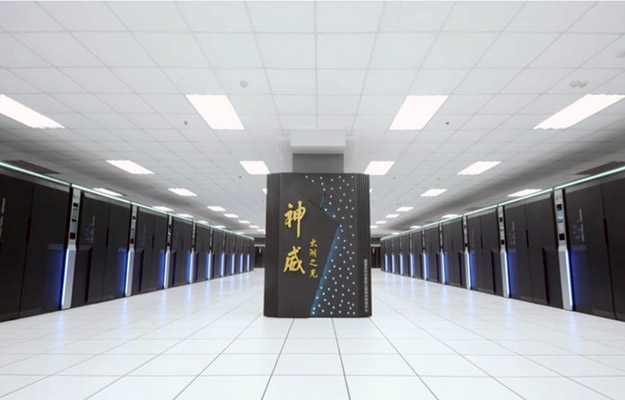U.S. To Field 200 Petaflop ‘Summit’ Supercomputer In 2018 Doubling Performance Of Chinese Rivals
There is one constant in the world of supercomputers: no one is going to be 'fastest' for long. In fact, some supercomputers can seem downright slow after only a couple of years, as hardware continues to become faster and more dense.
Take for example Oak Ridge's TITAN supercomputer. Launched in 2013, this supercomputer managed to push about 20 petaFLOPs of throughput (17.59 pFLOPs LINPACK; 27 pFLOPs theoretical). At the time, that was downright mind-blowing. But consider TaihuLight, China's latest supercomputer, coming in at 93 petaFLOPs. For those who don't want to grab a calculator or exercise simple math, that means that in a mere three years, China managed to push out a supercomputer 5x faster than ORNL's TITAN.

China's 93 petaFLOP TaihuLight supercomputer
Remember what was said above, though: no one is going to be fastest for long. The U.S. has wasted no time in reiterating that, and surprise, surprise: Oak Ridge is involved yet again.
ORNL's next supercomputer is going to be called Summit, and it's expected that it will launch with 200 petaFLOPs capabilities. For a system that's set to launch in early 2018, a literal doubling of China's new TaihuLight is downright mind-boggling.
Perhaps most exciting about this kind of progress is the hope that exascale computing is not that far behind. Of course, we'd need five of ORNL's latest supercomputers to reach 1 exaFLOP, but that doesn't make it any less exciting to know that it's something that's definitely going to happen.
Nonetheless, that doesn't mean that we shouldn't be excited about Summit, because there are numerous reasons to be. As the chart above highlights, despite being much more capable than TITAN, Summit is going to be able to cut down on the total number of computer nodes to 3,400, from 18,688.
Here's another way to look at it. Summit is going to be roughly 10x faster than TITAN, yet it's going to draw just ~10% more power. The hardware chosen of course has a lot to do with this. On the CPU side, IBM will be populating the nodes with its POWER 9 processors, while on the GPU side, NVIDIA's Volta will be employed.
Overall, Summit is downright impressive. It's going to offer a tenfold performance increase for barely any additional power usage. With that set to launch in 2018, we can't help but wonder about what future supercomputers we'll hear about at that time.


